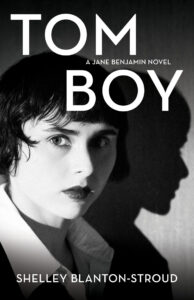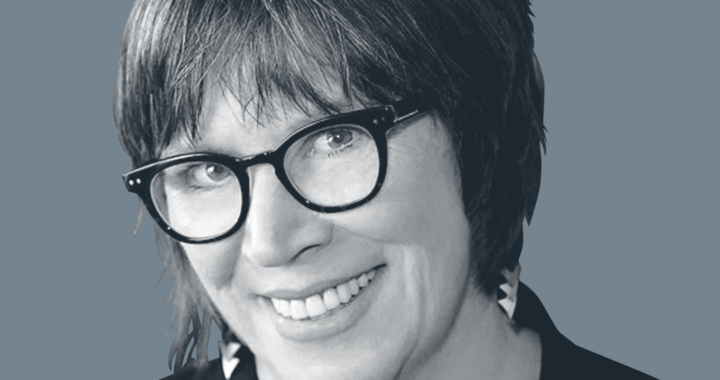Could you tell us about your latest novel, Tomboy?
Set in the 1930s, Tomboy is about Jane Benjamin, an ambitious young woman struggling to balance her desire to prove herself in the competitive world of gossip journalism against her obligation to family and friends and her obligation to tell the truth. The stakes get higher when people start dying and Jane has to decide what to do with the facts she finds about those murders.
What inspired you to create the character of Jane Benjamin?
I have always been fond of girl characters who don’t exactly fit in. Often they don’t fit because in some way they are unconventionally special. Their gifts are also their weaknesses. That’s true of Jane. She’s ambitious, which is great, but it makes her act out in ways that create trouble for her and others because her culture isn’t ready for such a girl. I wanted to create a character ahead of her time. For me, that was Jane.
You describe Jane Benjamin as a difficult girl. What do #difficultgirls mean to you and why is it important to tell their stories?
Difficult girls don’t sit neatly on the shelf where they presumably belong. Their uniqueness makes a mess of the usual order. But interesting things rarely happen in the neat spots. It’s in the disorder that creativity emerges. A difficult girl creates that kind of disorder. They’re interesting, and at risk.
What drew you to the noir/thriller genre?
Pure enjoyment. When I first began to write about Jane, I didn’t know what the book would be. Then I asked myself, what do I enjoy reading? In noir/thrillers, the protagonist has to live with the unknown. Even doing the work to solve a murder, questions remain. The noir plot requires the shadow of doubt. And that gives the reader something to ponder. For me, that is reading fun. As a college lecturer for decades, my greatest joy was in figuring out the meaning of a text and designing a plan for supporting students in finding their own meaning in that. In a way, it’s similar to writing a thriller. I know what I think it means. But I want the reader to arrive at her own idea.
What is your writing process like? Do you have an outline, or do you have an idea and see where the story will take you?
I wish I could give you a nice, pat answer, but it’s messier than that. Writing my first novel, Copy Boy, was a completely organic process. I discovered what I was writing by writing it. I wrote four completely different versions before I was through—different POV, different protagonist, different plot! It took me about ten years from start to publication. Those were fascinating learning years. It was an apprenticeship, really.
But with Tomboy, I felt greater urgency right from the start. I knew so much more about the world and characters and premise I was writing, so I experimented with planning and wound up using a couple systems.
I turned to Jessica Brody’s Save the Cat Writes a Novel for a rough guide to the beats I intended to hit, though I allowed myself to veer away whenever I needed or wanted to. Having that guideline gave me a structure that kept me going much more intentionally. It never felt limiting. I had fun writing within its conventions. I especially liked checking my scenes to make sure something—whether major or minor—shifts within. Many writing guides suggest strategies similar to Save the Cat. (And of course many guides also reject systems, of course.) This worked for me and I’m continuing to use it on book three.
I also like to focus in advance on an idea or problem I’m drawn to while writing. For instance, in Tomboy, it was 1930s Female Ambition. I put that in a circle in the middle of a page, with spokes radiating out. At the end of each spoke was a character who reacts to or illustrates something about female ambition. I wanted each of those characters to show something different about that topic. It didn’t mean that they all had to speak directly about it. That would be too on the nose. But something about the way they work in the novel should give the reader an impression of a particular response to female ambition. Sometimes the differences between their responses will come from their personality types, sometimes from unavoidable social conditions. In this way, by the end of the novel, I want the reader to have the sense that they’ve read a somewhat whole picture of female ambition in that time period.
What has your research process been like to write these historical novels set during the Great Depression?
I love to read my way into writing. Usually I step in something sticky in the histories I’m reading and I know that I will be working around that. For Tomboy, that was the real life Alice Marble, Wimbledon Champion of 1939, the last year they held the championship before World War II. Alice was a captivating figure—a brilliant athlete, first editor of the Wonder Woman comic and designer of her first costume, night club singer and spy. Learning about Alice’s history helped me to create my tennis-star character, Tommie O’Rourke, whom I love. It all began with Alice Marble’s biography, The Divine Miss Marble: A Life of Tennis, Fame, and Mystery, by Robert Weintraub.

You recently retired from teaching writing at Sacramento State University and still work with other writers in many different capacities. How do you think the experience of teaching has shaped you as a writer?
I think that the combination of teaching and writing has helped me be more aware of the relationship between writer and reader. It has made me more conscientious about anticipating a reader’s questions and deciding to what degree I will answer them. I also think that working as a writer increased my empathy for writing students, who very naturally feel sensitive about critique.
Do you have any advice for aspiring writers?
Yes, I do. Writers write. Don’t just think about writing. Write. Don’t idealize writing. Write. Don’t just read books about writing. Write. Don’t just shop for journals and pens. Write. Don’t worry your writing won’t be good enough. Just write.
What are you currently reading?
I’m reading The Latecomer, by Jean Hanff Korelitz. I’m loving it so far.
Finally, if you could meet your character, Jane Benjamin, how would you spend the day with her? Would you and your heroine get along?
It depends. If I met her now, I fear I would feel motherly toward her, try to give her advice she doesn’t want, urge her to be safer and more reflective. She would roll her eyes at me. She wouldn’t have time for that way of being. But if I met her when we were both nineteen, I think I would have been the friend to her that I was to some of my real life high school friends. I might have been her designated driver. I might have worried at the party about what she was getting up to. She would have appreciated my being her wingman.
About Shelley Blanton-Stroud
Shelley Blanton-Stroud grew up in California’s Central Valley, the daughter of Dust Bowl immigrants who made good on their ambition to get out of the field and into the city. She taught college writing for three decades and consults with writers in the energy industry. She codirects Stories on Stage Sacramento, where actors perform the stories of established and emerging authors, and she serves on the advisory board of 916 Ink, an arts-based creative writing nonprofit for children. She has also served on the Writers’ Advisory Board for the Belize Writers Conference. Copy Boy was her first Jane Benjamin Novel. Her second Jane Benjamin novel, Tomboy recently came out this summer and her third novel, Working Girl, will come out in November 2023. Shelley and her husband live in Sacramento with an aging beagle and many photos of their out-of-state sons and their wonderful partners.

